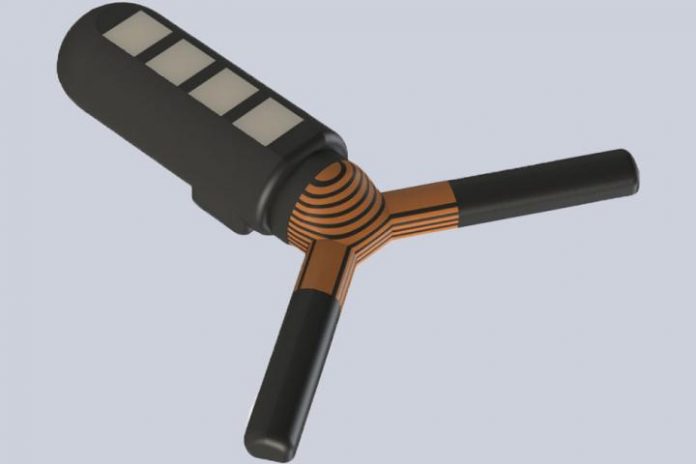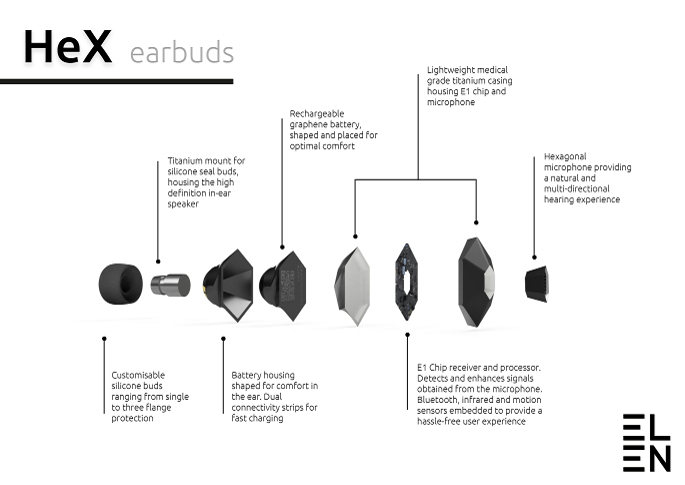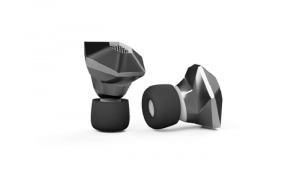
One of the most interesting developments in medicine is the ability to customize drugs, and 3D printing has played a big role in the advancement of this kind of patient-specific capability. In a fascinating convergence of multiple forms of technology – including 3D printing – researchers at MIT, Draper University and Brigham and Women’s Hospital have developed a 3D printed ingestible capsule that can be controlled using Bluetooth technology. The capsule, which can be customized to deliver drugs, sense environmental conditions, or both, can sit in the patient’s stomach for at least a month. It can also transmit information and respond to instructions from a smartphone.
According to the researchers, these capsules could be used to deliver drugs to treat a variety of diseases, especially ones in which drugs must be taken over a long period of time. They could also be designed to sense things like infections or allergic reactions and then release a drug in response.
“Our system could provide closed-loop monitoring and treatment, whereby a signal can help guide the delivery of a drug or tuning the dose of a drug,” said Giovanni Traverso, Ph.D., a visiting scientist in MIT’s department of mechanical engineering, where he will be joining the faculty in 2019.
The capsules are designed to work with the Internet of Things, potentially communicating with other wearable and implantable medical devices, which could then transmit information to the patient’s or doctor’s smartphone.
“We are excited about this demonstration of 3D printing and of how ingestible technologies can help people through novel devices that facilitate mobile health applications,” said Robert Langer, ScD, the David H. Koch Institute professor and a member of MIT’s Koch Institute for Integrative Cancer Research.
The research is documented in a paper entitled “3D-Printed Gastric Resident Electronics.” For several years, the research team has been working on the development of ingestible sensors and drug delivery capsules, which could replace long-term drugs that currently have to be injected. They could also be used for diseases like HIV and malaria, which have very strict drug dosing regimens.

In 2016, the research team designed a star-shaped capsule with six arms that fold up before being encased in a smooth capsule. After the patient swallows the capsule, it dissolves and the arms expand, allowing it to lodge in the stomach. In the new study, the researchers developed a similar device that expands into a Y shape, allowing it to stay in the stomach for about a month before breaking up. One of the arms of the Y includes four small compartments that can be loaded with a variety of drugs, packaged within polymers that allow them to be released gradually over several days. The researchers believe that they could also design the compartments to be opened remotely via Bluetooth.
The device can also carry sensors that monitor the gastric environment and send information via a wireless signal. In previous work, the researchers created sensors that can detect vital signs such as heart rate and breathing rate. In the new study, they designed the capsule to be able to monitor temperature and relay that information to a smartphone within arm’s reach.
“The limited connection range is a desirable security enhancement,” said lead author Yong Lin Kong, Ph.D, a former MIT postdoc who is now an assistant professor at the University of Utah. “The self-isolation of wireless signal strength within the user’s physical space could shield the device from unwanted connections, providing a physical isolation for additional security and privacy protection.”
3D printing allowed the researchers to incorporate multiple components into the capsules, and to create the capsules from alternating layers of stiff and flexible polymers, which help them to withstand the acidic environment of the stomach.

(A) Endoscopy images show the electractive drug delivery module (green dashed-line box) prior to triggering. Mucous films from the stomach covers reservoir. (B) The wireless triggered release of drug as a result of the opening of drug reservoir cover (green arrow) which was not interfered by the mucous coverage. (C) Washed triggered reservoir to show the expanded system (green arrow)
“Multimaterials 3D printing is a highly versatile manufacturing technology that can create unique multicomponent architectures and functional devices, which cannot be fabricated with conventional manufacturing techniques,” said Dr. Kong. “We can potentially create customized ingestible electronics where the gastric residence period can be tailored based on a specific medical application, which could lead to a personalized diagnostic and treatment that is widely accessible.”
Currently, the device is powered by a small silver oxide battery, but the researchers are investigating the possibility of replacing the battery with alternative power sources, such as an external antenna or even stomach acid. They are also working on developing other types of sensors that could be incorporated into the capsules. They have already tested the temperature sensor in pigs, and they believe that they may be able to start testing the devices on humans within two years. A company has been formed to develop the technology for human use.
Authors of the paper include Yong Lin Kong, Xingyu Zou, Caitlin A. McCandler, Ameya R. Kirtane, Shen Ning, Jianlin Zhou, Abubakar Abid, Mousa Jafari, Jaimie Rogner, Daniel Minahan, Joy E. Collins, Shane McDonnell, Cody Cleveland, Taylor Bensel, Siid Tamang, Graham Arrick, Alla Gimbel, Tiffany Hua, Udayan Ghosh, Vance Soares, Nancy Wang, Aniket Wahane, Alison Hayward, Shiyi Zhang, Brian R. Smith, Robert Langer and Giovanni Traverso.
Discuss this and other 3D printing topics at 3DPrintBoard.com or share your thoughts below.












